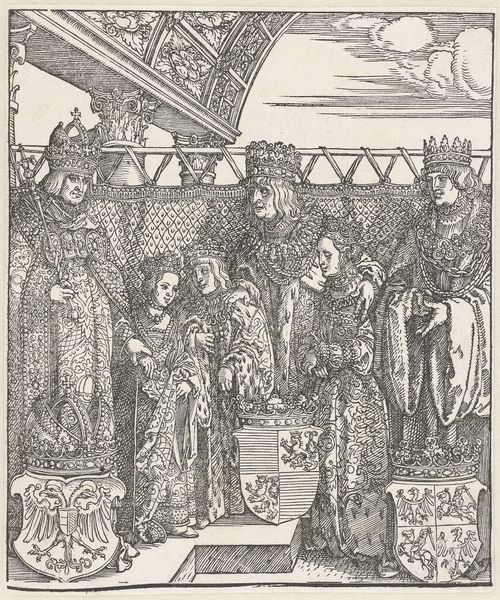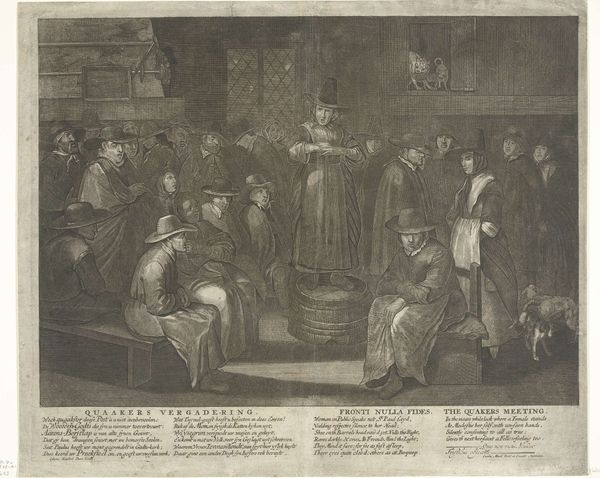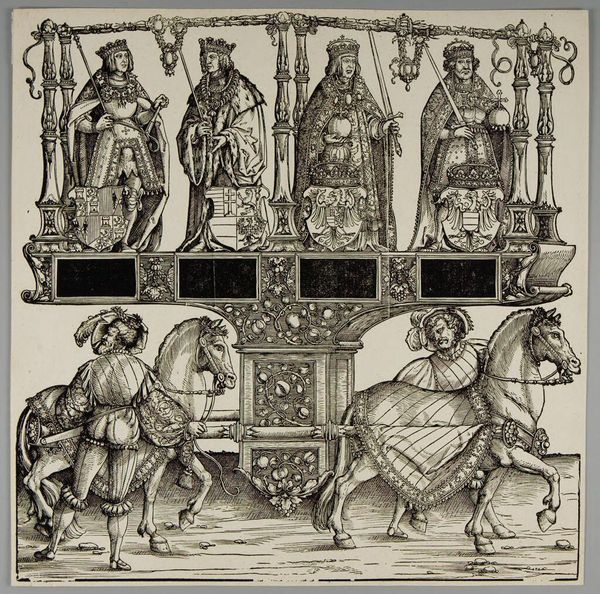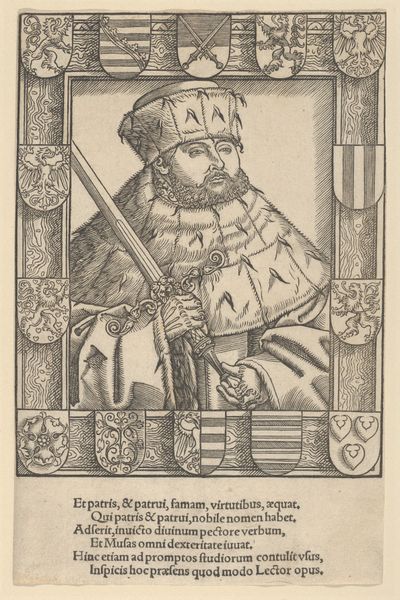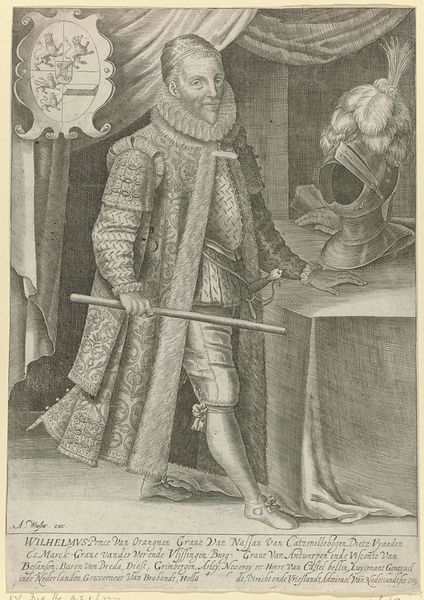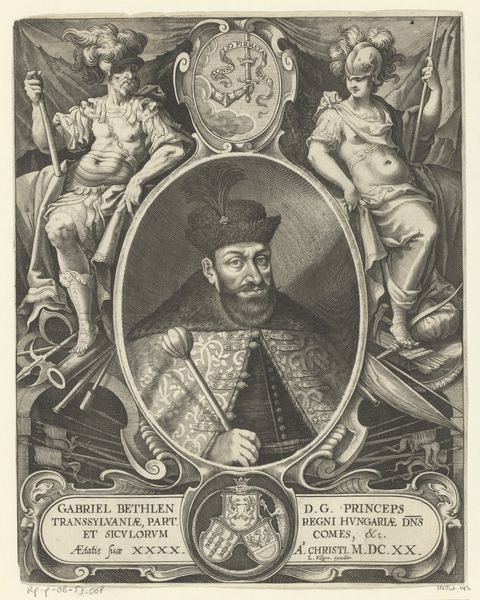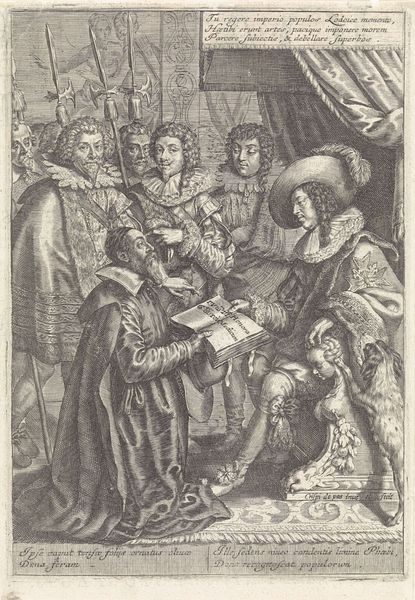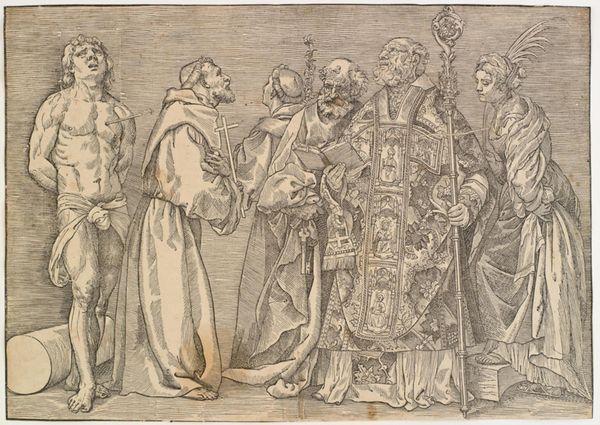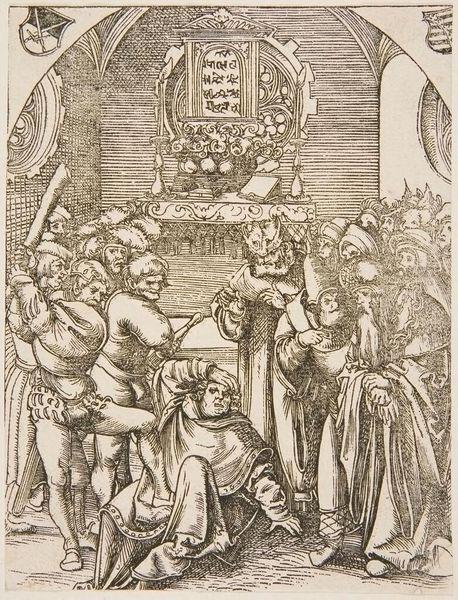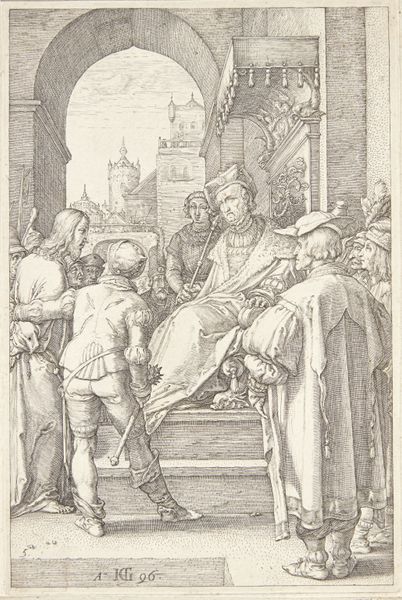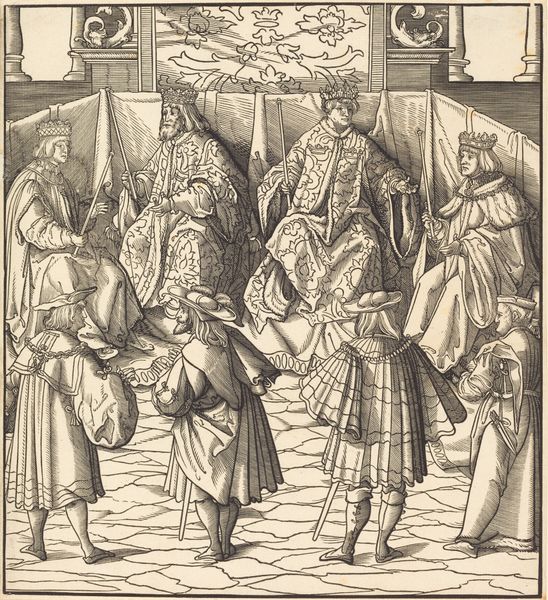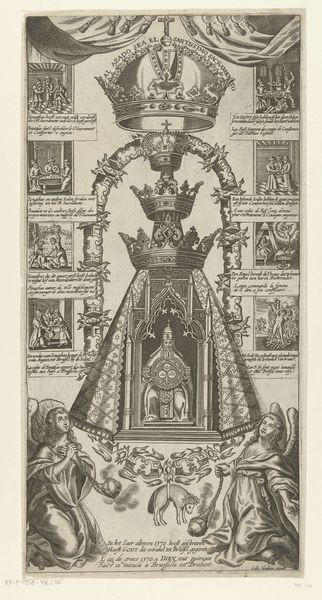
Henry VIII handing over a charter to Thomas Vicary, commemorating the joining of the Barbers and Surgeons Guilds 1541
0:00
0:00
hansholbeintheyounger
Barber-Surgeons' Hall, London, UK
panel, oil-paint
#
portrait
#
panel
#
narrative-art
#
oil-paint
#
figuration
#
11_renaissance
#
oil painting
#
famous-people
#
group-portraits
#
history-painting
#
northern-renaissance
#
academic-art
Copyright: Public domain
Curator: Looking at this impressive panel painting now in the Barber-Surgeons’ Hall, London, we see Hans Holbein the Younger’s work from 1541 titled "Henry VIII handing over a charter to Thomas Vicary, commemorating the joining of the Barbers and Surgeons Guilds". Editor: It strikes me as an exercise in power, displayed through very deliberate visual choices. The heavy fabrics, the crown…it all feels about making a statement of authority through material richness. Curator: Precisely. Holbein was masterful at weaving political messaging into portraiture. Here, he captures Henry VIII bestowing a charter. This wasn’t simply a bureaucratic action; it was about royal endorsement and control over these vital professions. The guild gains prestige and power via royal decree. Editor: And how was it made? Looking closely, I am fascinated by the process of rendering the textures, the depth in those heavy velvet robes against the stark panel. It highlights a keen understanding of material and how light interacts with it, almost sculptural in its execution. Did they source local materials? The oak panel itself tells a story. Curator: Good point. It's very likely the panel was crafted from locally sourced oak, reflecting common artistic practice. And the oil paint, ground pigments combined with oil, allowed Holbein that remarkable control of blending, and layering – the means to realistically portray not just faces, but also status, in the era's complex hierarchy. The painting isn’t only about commemorating a merger, but publicly presenting power, social rank and privilege. Editor: Yes, and beyond its social messaging, I also see how Holbein, by immortalizing the process of making medicine, elevates a field reliant on material and manual skill, granting those involved a unique social value by royal recognition of their expertise. Curator: Absolutely. It serves as a lasting visual contract. A record of not only royal authority, but of a significant shift in medical practices and regulations, visualized in a masterful work of art. Editor: Seeing how the material reality intersects so powerfully with politics gives you so much to ponder regarding both art and society in that era.
Comments
No comments
Be the first to comment and join the conversation on the ultimate creative platform.
